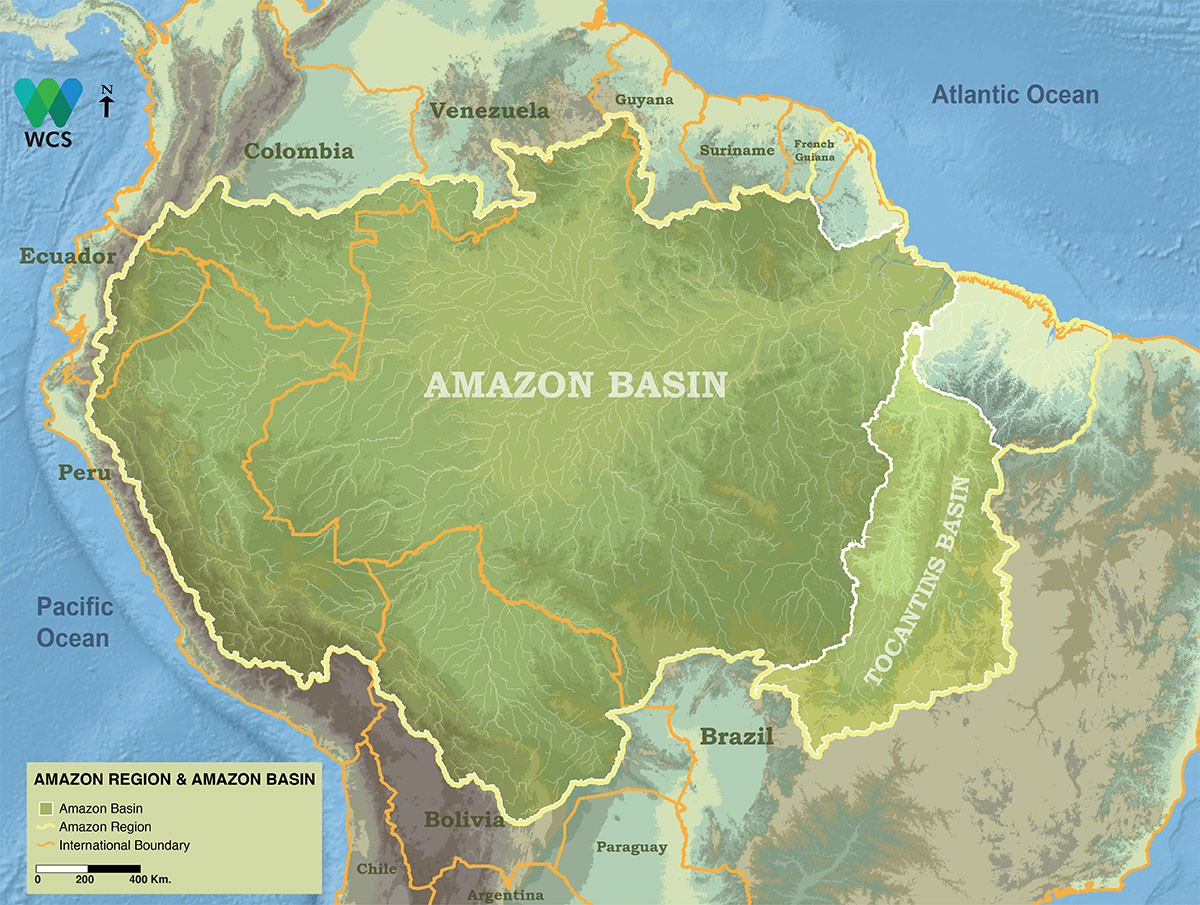BASIN MANAGEMENT
The Amazon may be delineated by its hydrographical basin (Amazon Basin) and as the Amazon Basin with its Atlantic coastal drainage (Amazon Region). The latter is useful because of its influence on the enormous estuary.

The Amazon may be delineated by its hydrographical basin (Amazon Basin) and as the Amazon Basin with its Atlantic coastal drainage (Amazon Region). The latter is useful because of its influence on the enormous estuary.
Integrated River Basin Management
Considering the wide-ranging impacts of infrastructure development and natural resource exploitation the world over, IRBM is now a widely recognized framework to confront adequate conservation scale. The concept has been slow in coming to the Amazon because of the major focus on upland rainforest, lack of basic ecological data on the aquatic ecosystems and the political complexity of the Basin.
The large-scale development of agriculture, mining, oil & gas, hydroelectric dams, timber and fisheries in the Amazon in the last three decades have set the environmental stage for the necessity of IRBM. The RAMSAR Convention mentions defining major challenges as a first step to IRBM, of which the Amazon Waters Alliance began with an explicitly defined river basin and wetlands classification and recognition of the need to scale-up conservation approaches of what to now have basically been very local in nature.
There are many definitions of IRBM, some of which are given at the end of this page. All agree that basins provide the spatial context for large-scale environmental planning and management of freshwater aquatic ecosystems linked to rivers, streams and other wetlands. Some definitions emphasize the coordinated functioning of relevant government sectors, but this is now generally recognized as a long-term goal that usually takes decades to implement. It is more effective in the short term to focus on specific objectives to call attention to the need for large-scale management of watersheds, water and the natural resources associated with them.
To foster the IRBM concept the Amazon Waters Alliance has chosen to focus on the fisheries resource not only because of its nutritional and economic importance in the Amazon Basin, but also because its ecological role. Migratory fish species define basin-level biological scales and thus can be used as ecological indicators for monitoring and evaluating infrastructure and other impacts on water quality and quantity and wetlands. At the same time this approach uses fish migration patterns to provide adequate scales for managing fisheries and provides a compelling example of why IRBM is critical for the Amazon. When Amazon fisheries and their wetlands are managed well using an IRBM approach, then other aquatic biodiversity will also largely be protected further contributing to the wellbeing of Amazon people.
IRBM Definitions
World Bank
An integrated water resources perspective ensures that social, economic, environmental and technical dimensions are taken into account in the management and development of water resources. Source: http://web.worldbank.org/
CAPNet
The UN Programme on Capacity Building for Integrated Water Resources Management describes IWRM as a “systematic process for the sustainable development, allocation and monitoring of water resource use in the context of social, economic and environmental objectives.” Source: CAPNet Tutorial on Integrated Water Resources Management, http://www.archive.cap-net.org/
Global Water Partnership
The GWP says that Integrated Water Resources Management may be defined as “a process which promotes the coordinated development and management of water, land and related resources in order to maximize the resultant economic and social welfare in an equitable manner without compromising the sustainability of vital ecosystems.” Source: Integrated Water Resources Management – GWP Technical Committee (TEC) Background Paper No. 4, cited in http://www.gwp.org/en/The-Challenge/IWRM-Resources/
World Water Forum
IWRM is described as an incremental and adaptive policy approach that seeks the coordinated development and management of water, land and related resources. Source: 4th World Water Forum Synthesis Report http://www.worldwatercouncil.org/fileadmin/wwc/World_Water_Forum/WWF4/synthesis_sept06.pdf
WWF
The WWF describes Integrated River Basin Management as the process of coordinating conservation, management and development of water, land and related resources across sectors within a given river basin, in order to maximize the economic and social benefits derived from water resources in an equitable manner while preserving and, where necessary, restoring freshwater ecosystems. Source: http://www.panda.org/about_wwf/what_we_do/freshwater/our_solutions/rivers/irbm/index.cfm

